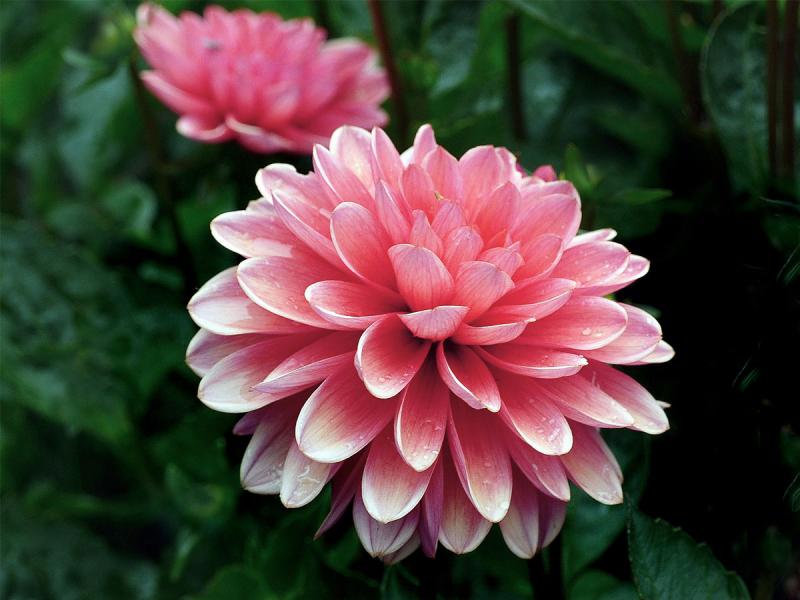My Italian grandmother called her friend's dahlia tubers “dahlia potatoes” and she was actually more correct than she realized. The dahlia started life as a traditional Aztec food and only later was grown for its flowers. The Aztecs also used dahlias to treat epilepsy. Edible dahlia roots saved many French people from starvation after the potato crop failed during the 1840s. Dahlia tubers are still part of the regional cuisine of Oaxaca, Mexico.
Dahlias come in a variety of colors, shapes and even sizes. They bloom in daisy-like single-flower types, baseball-size ball types, pompon types, cactus-flowered, semi-cactus flowered, collarette type, and of course, the stunning dinner-plate dahlias with blooms that can reach 10 inches across or larger.
Dahlia colors include deep maroon, red, pink, yellow, orange, white and purple. Many are striped or have petals tipped in white so they look like they've been dipped in frosting.
Originally from Mexico and central America, dahlias are only winter hardy in USDA zones 8-11, so most gardeners have to wait until the soil has warmed up and all danger of frost has passed before planting them. For earlier blooms, start the tubers indoors and transplant out to the garden when ready.
Because dahlias bloom from the middle of summer right up until frost, they fit well in almost every garden, whether alongside your front door, along paths and walkways, or in the cutting garden, where they will give you flowers for an endless stream of bouquets.
Smaller dahlias can be potted up for the patio or indoors at a sunny window. Some dahlias will grow up to eight feet tall and can be planted as a privacy screen or a flowering backdrop to shorter plants.
Like potatoes, dahlia tubers are graded by size, with Grade No. 1 tubers the largest. The larger the tubers, the more flowers you will get. Plant your dahlia tubers where they will get full sun, at least six hours of sunlight every day, but the sunnier the better.
Dahlias grow best in loose, fertile soil that drains well. You can give your dahlia bed a boost by digging in lots of compost. Plant the tubers four to six inches deep with the stem facing up. The spot where the tubers meet the stem or crown of the plant should be covered by an inch or two of soil. Your tubers should germinate in two to four weeks.
You can fertilize them with a good general-purpose organic fertilizer, being careful not to overdo it, or you will end up with lots of lush foliage and few flowers. For bushier plants and more blossoms, pinch the growing tips of the stems when your dahlias are about nine to 10 inches high. When you see the first flower buds appear, cut back some of the tallest stems to encourage flowering.
If you grow the taller dahlias, you will want to give them support by tying them to stakes or enclosing them in cages. Drive the stakes into the ground at planting time so they don't damage the roots. As the stems begin to grow, tie them to the stake every foot or two.
In the language of flowers, dahlias symbolize creativity, elegance, inner strength and dignity. They also stand for someone who sticks with their sacred values. No wonder they are often used at weddings or honor ceremonies. In Central America, an extract from roasted dahlia tubers called Dacopa is used to flavor beverages.
Grow dahlias and you will be rewarded with an endless supply of blossoms right up until frost. Best of all, not only are the flowers delicious colors, they are also absolutely edible. Use them to decorate cakes, pastries, and as a show-stopping, colorful garnish. They are a reminder that often, it is beauty that sustains the human soul.





















































